Due to their varied shades, abundant flowering and unpretentiousness, phloxes have received well-deserved love among gardeners. Plants growing naturally in North America are very popular throughout Europe. Even a beginner in floriculture can cope with their cultivation and care, subject to all recommendations and rules.
Description, types and varieties of phlox with a photo
Annual phlox have the greatest variety of shades, shapes and varieties. They can be star-shaped or terry, blue, white, cream or various shades of red.
One of the best annuals is the Drummond phlox, which is native to Texas. The plant is branched bush, the height of which can be from 12 to 30 cm. Its opposite leaves are oval-lanceolate. Fragrant flowers can be salmon, yellow, white, dark red or purple.
The most popular varieties of Drummond annual phlox are:
 The Promis Pink variety is a low-growing plant up to 20 cm high. Its double flowers are pink in color. The variety looks good as separate bushes on alpine hills and in compositions on flower beds and flower beds.
The Promis Pink variety is a low-growing plant up to 20 cm high. Its double flowers are pink in color. The variety looks good as separate bushes on alpine hills and in compositions on flower beds and flower beds.- Variety "Constellation" is a lush bushes with flowers of bright colors with a diameter of up to 3 cm. Its inflorescences in the form of shields have a fragrant aroma and can be from white to red. The variety is used not only for decorating flower beds, but also for making bouquets.
- Annual undersized phlox belongs to a new variety. Branched bushes grow up to 20 cm and have pubescent leaves. The variety is widely used to decorate loggias and balconies.
- Terry phlox are bushes up to 30 cm in height. Their dense inflorescences consist of large double flowers. Shades of petals range from cream to dark red. Grown for the decoration of flower beds in the garden, balconies and loggias. Terry phlox are suitable for growing in pots and decorating rooms.
- Variety "Twinkling Star" is a miniature bushes up to 25 cm high. The petals of its flowers have an unusual shape with pointed tips. It blooms from June to September, both outdoors and at home.
- Variety "Star Rain" is a rather tall shrub with straight and lateral stems. Its height can be up to 50 cm. Fragrant flowers resemble stars and bloom for a long time. The variety is resistant to drought and frost, grows well in the sun, and practically does not bloom in the shade.
Annual phlox: growing from seeds
To achieve longer flowering, Drummond phlox it is recommended to grow seedlings... Seeds sown directly into the ground take a very long time to germinate, and plants grown from them bloom only at the end of summer. Earlier flowering can be obtained by sowing seeds in open ground before winter.
Sowing seeds in open ground
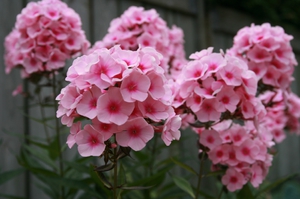 It is necessary to plant seeds immediately on a flower bed in October - November. If there is already snow, then it is removed, and seeds with a distance of 4-5 cm are scattered directly onto the frozen ground. To protect the plants from freezing, the beds are first sprinkled with prepared earth, then with snow and cover with leaves or straw... Seedlings will hatch in early spring. When two real leaves appear, they will need to be cut open, seated at a distance of 20 cm from each other.
It is necessary to plant seeds immediately on a flower bed in October - November. If there is already snow, then it is removed, and seeds with a distance of 4-5 cm are scattered directly onto the frozen ground. To protect the plants from freezing, the beds are first sprinkled with prepared earth, then with snow and cover with leaves or straw... Seedlings will hatch in early spring. When two real leaves appear, they will need to be cut open, seated at a distance of 20 cm from each other.
Sowing phlox seedlings
At home, sowing is done in early - late March. It all depends on when the last frost ends in your region. In order for the seeds to germinate quickly, it is not necessary to press them into the soil. From above, they are slightly sprinkled with an earthen mixture and sprayed with warm water.
Seedling boxes covered with glass or polyethylene, and put away in a warm place. The soil must be aired daily. When the first seedlings appear, the containers are installed in a well-lit place, and the glass or polyethylene is removed. At this stage, seedling care is only about keeping the soil moist.
After the appearance of two or three true leaves, young plants are planted in separate pots. Behind them already special care will be needed:
- In the early days, the seedlings are covered from sunlight with an opaque film or newspaper.
- When the sprouts take root, and their sixth true leaf grows, they are pinched in order to form a lush and compact bush.
- Before planting in open ground, seedlings are fed twice with mineral fertilizers.
- In April, young plants need to be hardened. To do this, the pots are put on an open balcony or garden for an hour or two.
Annual phloxes are planted in open ground after the end of frost, at the end of May. By this time, some varieties have already formed buds.
Phlox Drummond: planting and growing in the open field
Grown, matured and hardened seedlings are planted in well-lit areas, sheltered from the scorching sun. Plants will grow best in partial shade on high flower beds... In the sun, phlox inflorescences fade, and in partial shade, color saturation remains for a long time.
Landing features
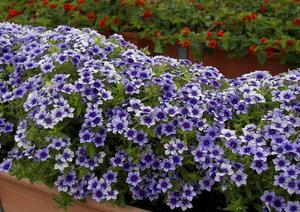 Annual phloxes dislike acidified areas and poorly drained soils. The best earthen mixture for them is fertile sand without clay. Lime can be added if necessary. If there are heavy loams on the site, then they are diluted with peat, organic fertilizers and sand.
Annual phloxes dislike acidified areas and poorly drained soils. The best earthen mixture for them is fertile sand without clay. Lime can be added if necessary. If there are heavy loams on the site, then they are diluted with peat, organic fertilizers and sand.
Seedlings are planted in shallow pits, at the bottom of which compost or biohumus is poured and some ash. The roots are gently straightened horizontally and covered with earth. The plants are watered, the soil around them is mulched.
Watering and feeding
Caring for Drummond phloxes, after planting them in open ground, will not be difficult. For the entire season, it is required to loosen the soil twice a month and to huddle it in the second half of the growing season. In this case, the root system will form faster.
Phlox is watered moderately, but regularly. One square meter of planting consumes one and a half to two buckets of water. On hot days, watering is done in the morning and evening. The water is poured directly under the root. It should not be cold, otherwise the roots may crack in the heat.
Drummond phlox is fed several times per season organic and mineral fertilizers:
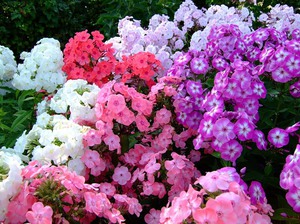 At the end of May, the bushes are fed with liquid manure, at the rate of 25-30 grams per bucket of water.
At the end of May, the bushes are fed with liquid manure, at the rate of 25-30 grams per bucket of water.- In early June, superphosphate and potassium salt are added to the liquid manure.
- In early July, only liquid manure is again used to fertilize phlox.
- At the end of July, plants are fertilized with potassium salt and phosphorus.
During the season, the tops of young plants are pinched. In this case, the bushes begin to branch better. Faded and wilted flowers are regularly removedto preserve the attractive appearance of the flower and prolong its flowering.
A flower bed of Drummond phlox of different shades and varieties looks beautiful and impressive. They can be used to decorate alpine slides and curbs. A large blooming ball decorating the yard can be obtained by planting annual phloxes in pots or buckets, and placing them next to each other.With proper care and cultivation, it will be possible to admire its flowering throughout the warm season.

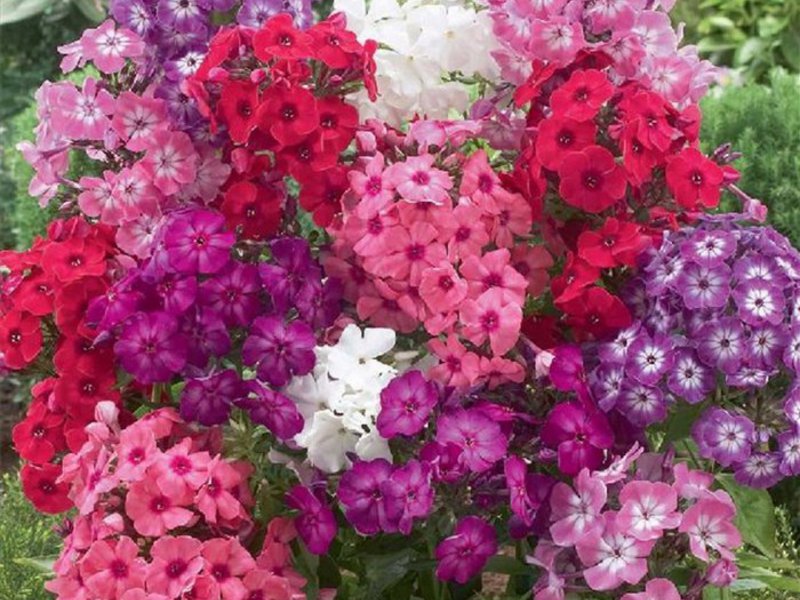
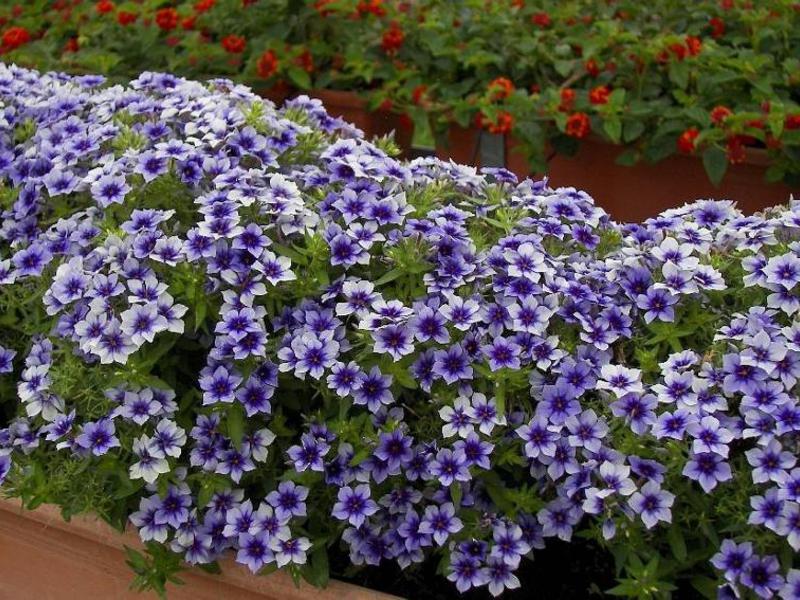

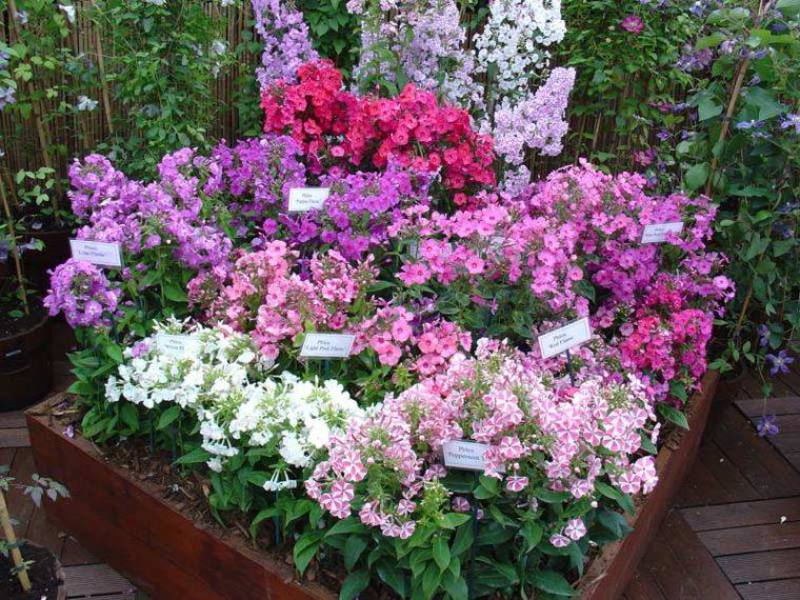
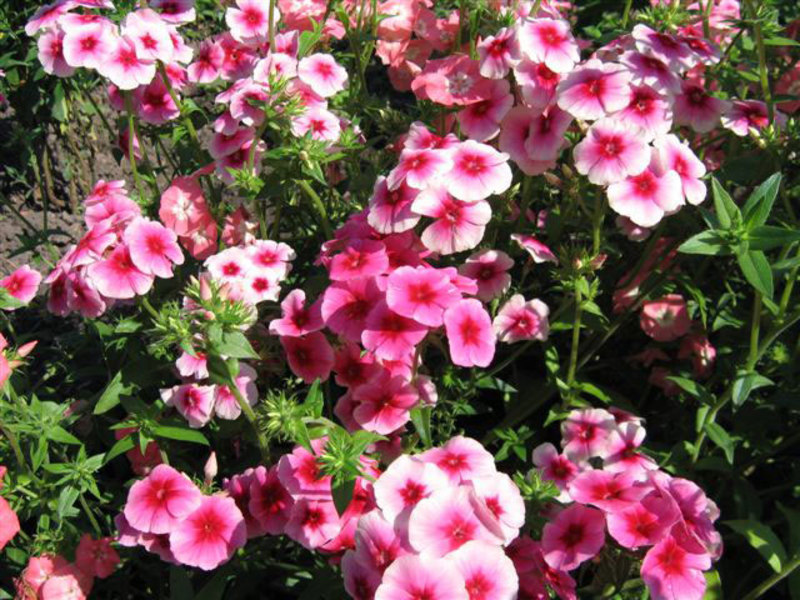
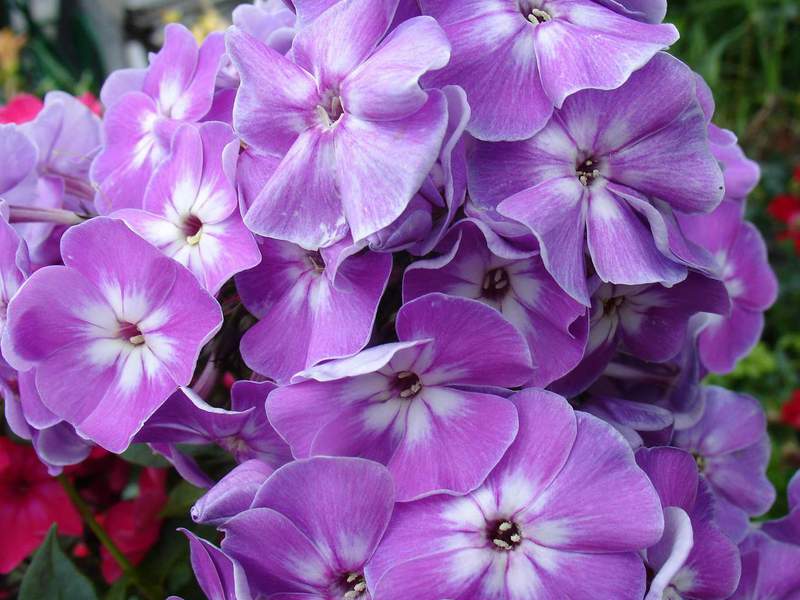
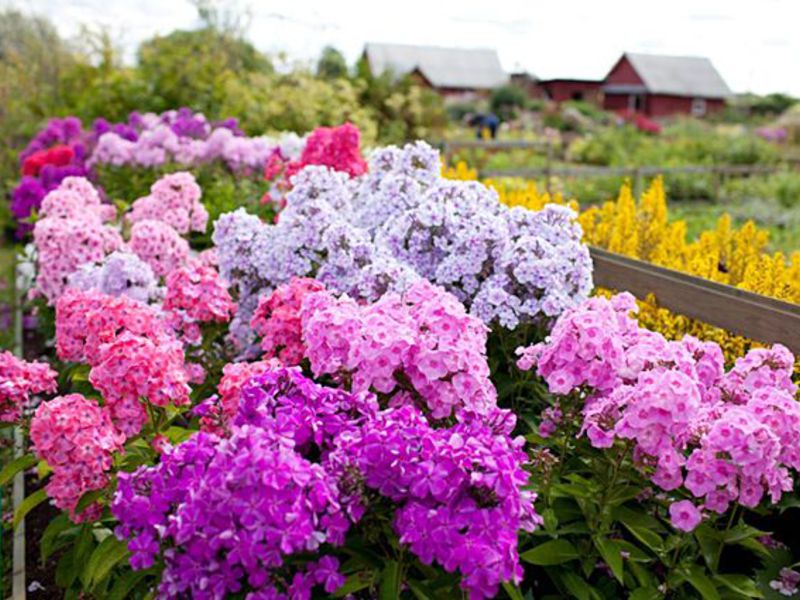
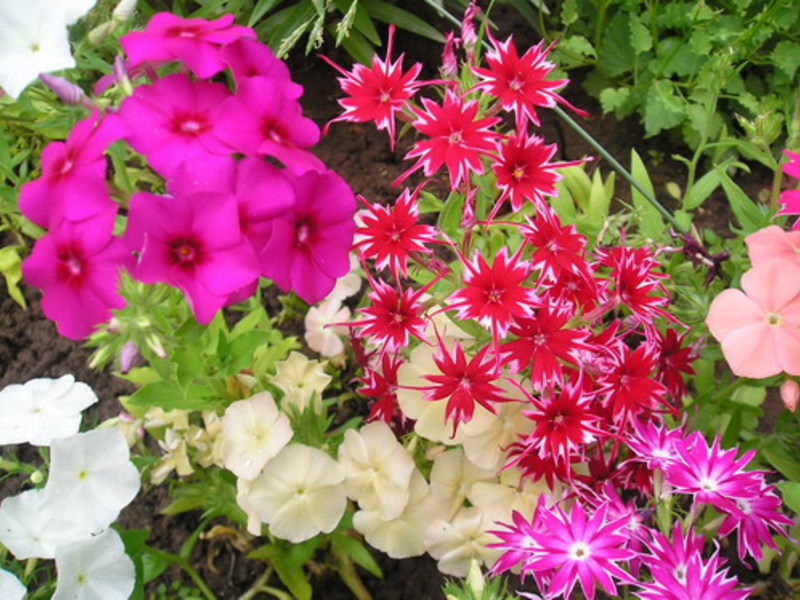
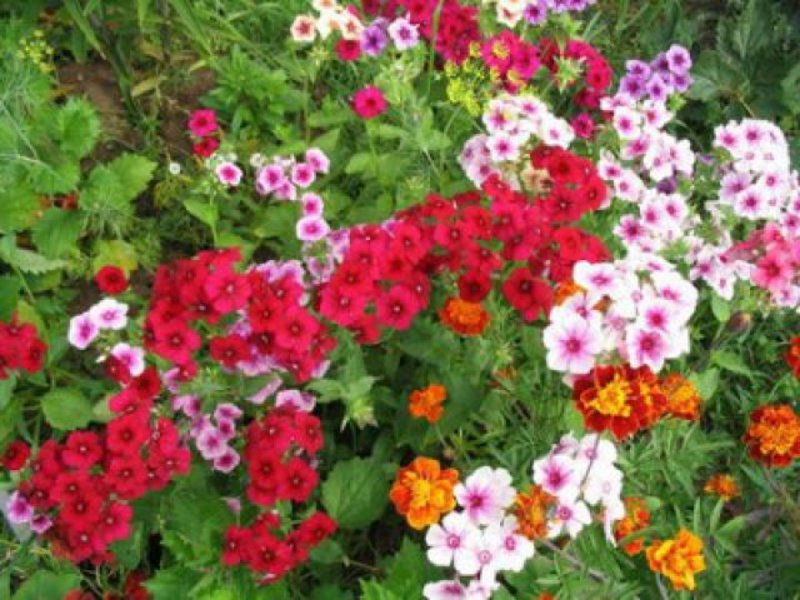
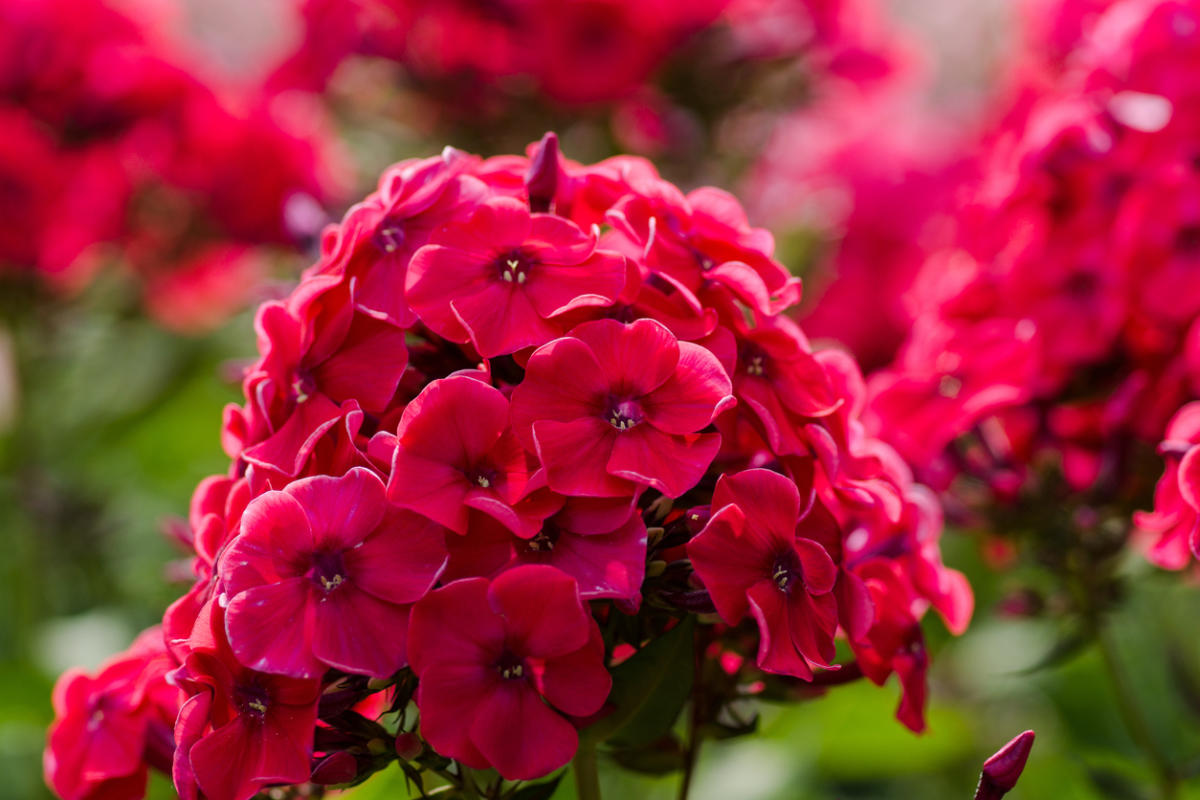
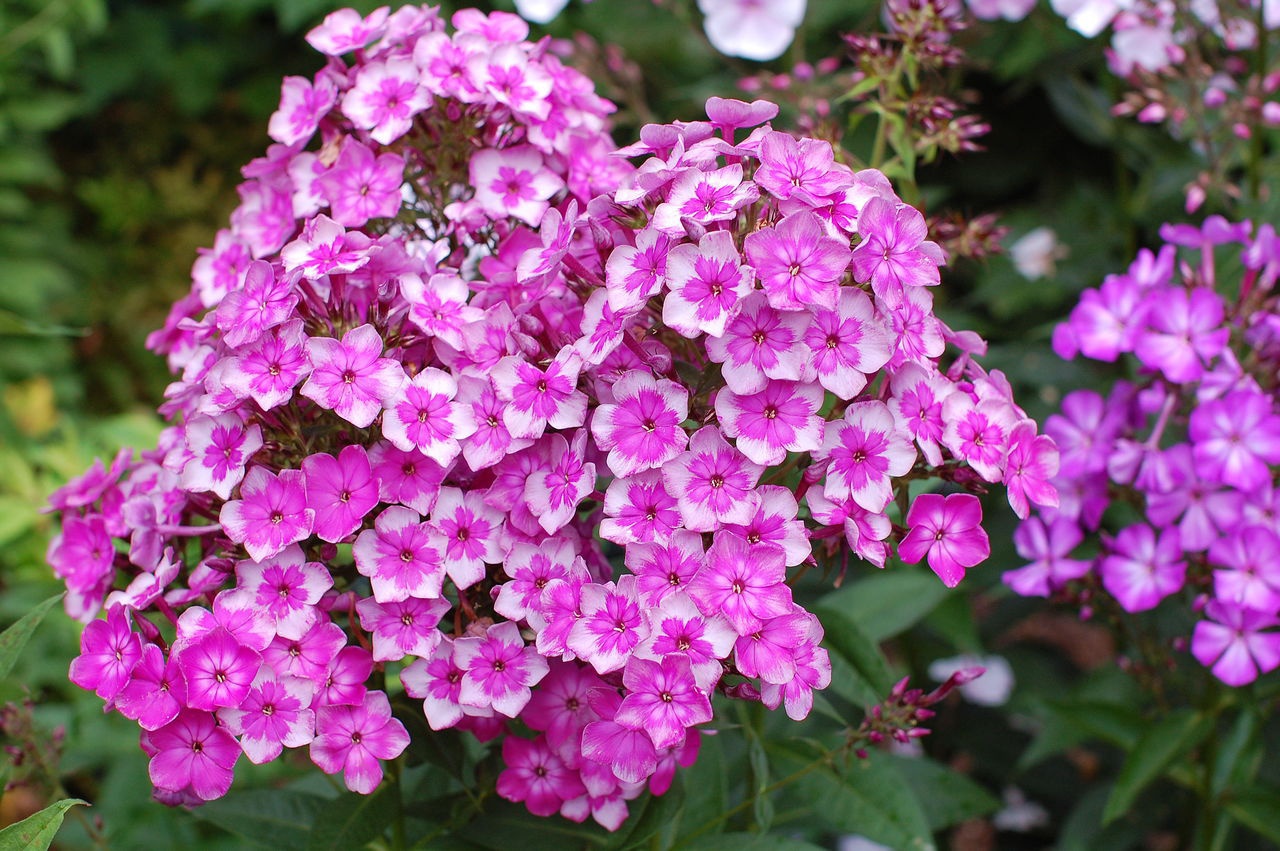

1 comment